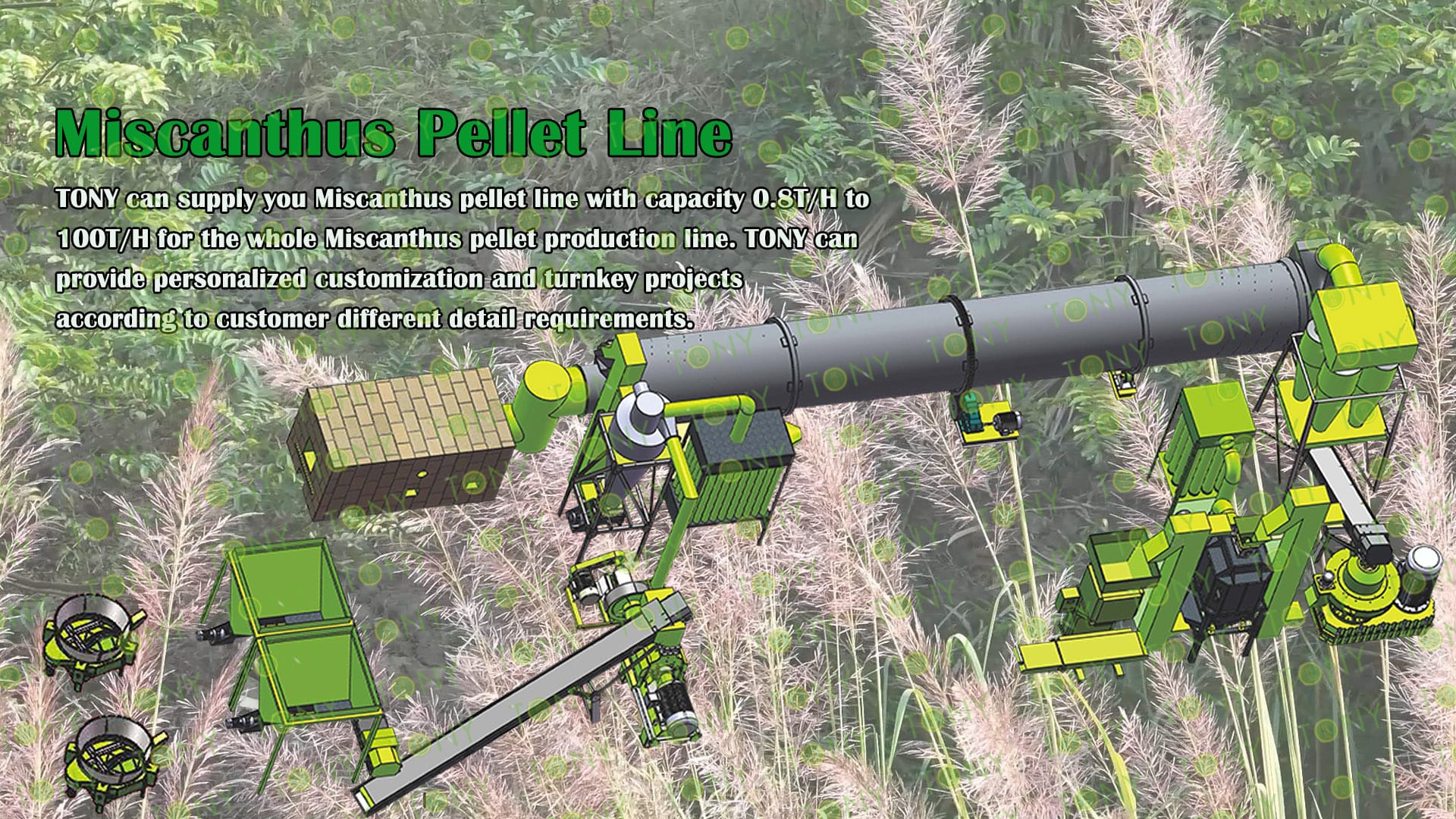
TONY Design 4.5-5Ton/Hour Miscanthus Production Line Specification
Miscanthus is mainly distributed in tropical and subtropical regions of Africa and Asia. The origin of Miscanthus is mainly in tropical and subtropical regions of Africa and Asia, and it is now widely cultivated. In China, Miscanthus is mainly distributed in Jiangsu, Zhejiang, Jiangxi, Guangdong, Hunan and other places, and grows in areas below 1,800 meters above sea level. Miscanthus is a common wild plant that grows in a variety of environments such as mountains, hills, slopes and wilderness. In addition, Miscanthus is also widely cultivated in Europe for power generation. Miscanthus is also distributed in North Korea, Japan and other places, and is distributed in India, Southeast Asia, Malaysia to the Philippines, as well as North Korea and Japan.

It is feasible to feed sheep with miscanthus pellets throughout the whole process, but attention should be paid to feeding balance and the adaptability of sheep.
1. Advantages Of Miscanthus Pellets
miscanthus pellets have the advantages of long shelf life, less waste, easy storage, and convenient feeding. Tmiscanthus are widely used in feed for animals such as dairy cows, horses, and pigs. Many farmers have thought of feeding sheep with miscanthus pellets, which is not only convenient, but also increases feed utilization and saves costs.
2. Problems With Feeding Sheep Throughout The Whole Process
However, can miscanthus pellet feed completely replace natural miscanthusland feeding during the whole process of feeding sheep? In fact, sheep can also get sunlight, wind, rain and other natural environment when eating miscanthus in the wild. Feeding with pellets throughout the whole process may affect the adaptability and physical condition of sheep. In addition, the type and quantity of miscanthus pellet feed should also be selected with attention. Excessive or unbalanced feeding will affect the health of sheep.
3. How To Feed Properly
In order to make it more feasible to feed sheep with miscanthus pellets throughout the whole process, the following points need to be noted:
1). Control the type and amount of miscanthus pellets fed, and it is best to combine it with natural pastures to ensure that the sheep get enough nutrition.
2). Do not blindly pursue convenience, but let the sheep graze in the wild to get the influence of the natural environment.
3). For young or sick sheep, it is not advisable to feed too much pellet feed, and natural miscanthusland should be the main feed.
4. Conclusion
It is feasible to feed sheep with miscanthus pellets throughout the whole process, but attention should be paid to the feeding balance and adaptability of the sheep. In order to achieve better breeding results, it is best to combine it with natural pastures, so that the sheep can grow and develop in a suitable environment and improve breeding efficiency.
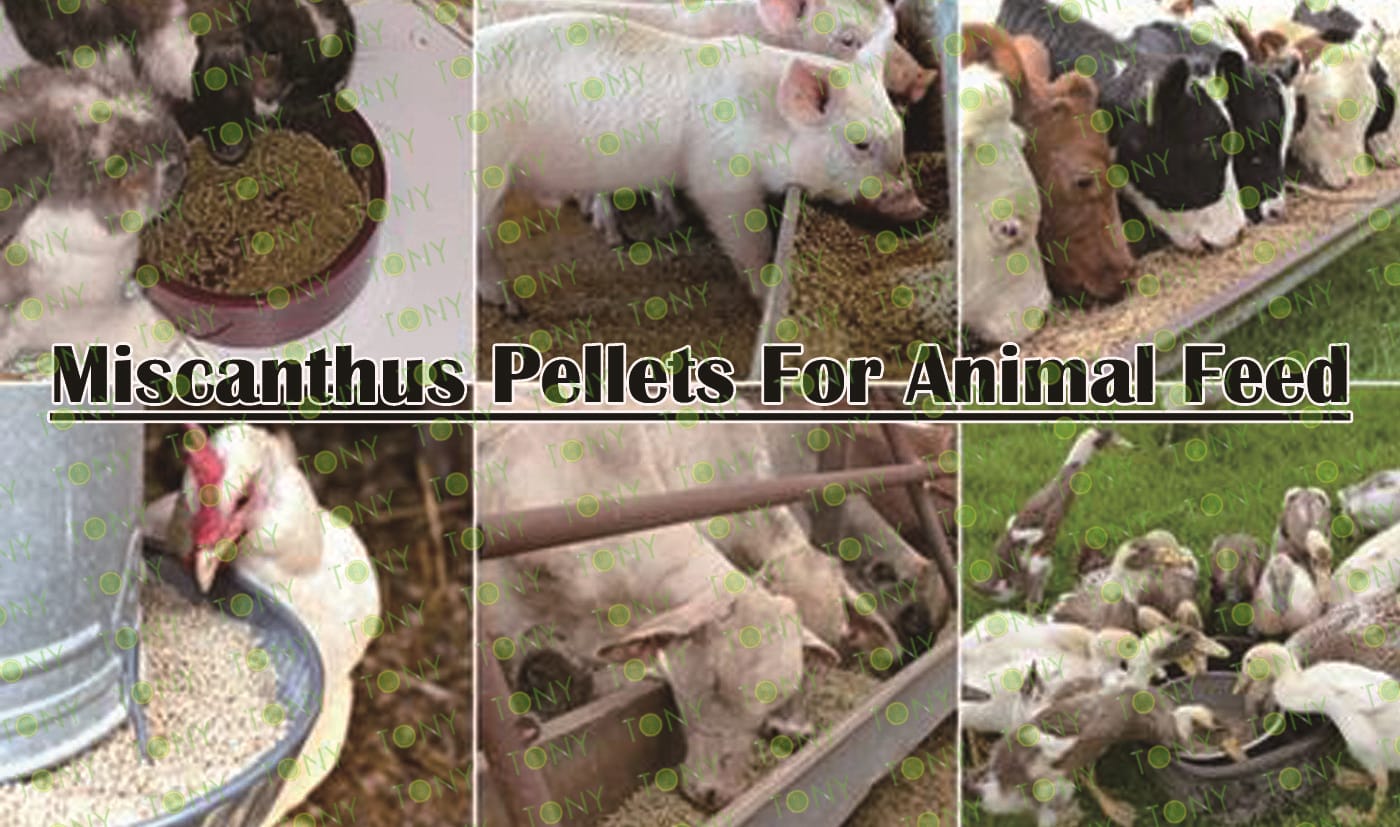

1. Crude Protein: Miscanthus has a high crude protein content, generally between 10%-18%, which is higher than the crude protein content of most forage grasses. Among them, the crude protein content of the tender stems and leaves of Miscanthus is the highest, which can reach more than 20%.
2. Crude Fiber: Miscanthus has a high crude fiber content, about 28%-32%. Crude fiber is one of the main components of grass and can effectively promote the digestion of ruminants.
3. Crude Ash: Miscanthus has a low crude ash content, about 7%. Crude ash refers to the non-combustible mineral components in grass, which plays an important role in the growth and development of ruminants.
4. Energy: Miscanthus has a low energy content, between 2500-480 kcal/kg. Although the energy content of Miscanthus is not high, the content of other nutrients is relatively balanced, which can meet the growth and development needs of ruminants.
5. Other Nutrients: Miscanthus also contains a variety of vitamins and minerals, such as vitamin A, vitamin C, iron, calcium, magnesium, etc., which also have a good promoting effect on the healthy growth of animals.
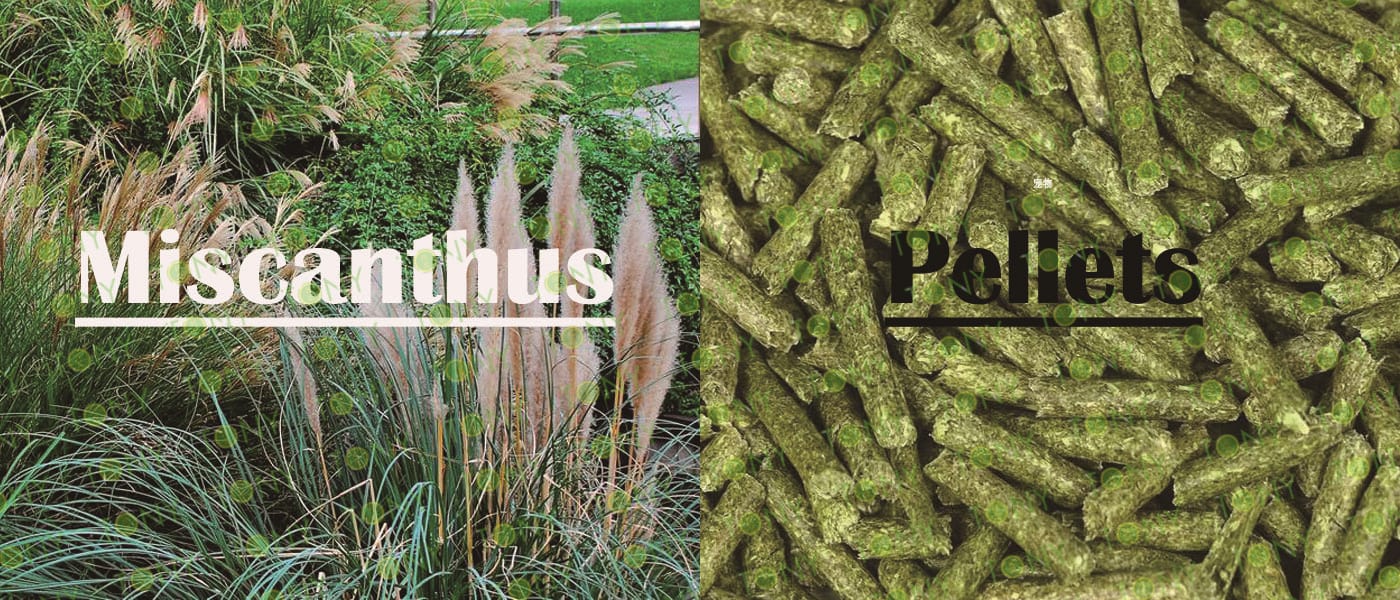
What are the factors that affect the yield of Miscanthus grains?
The main factors affecting miscanthus pellet yield include planting management, harvest timing, raw material handling and the efficiency of production equipment.
First of all, planting management is an important factor affecting miscanthus pellet yield. Reasonable planting management and good field management measures can significantly improve the growth quality and yield of miscanthus. For example, proper irrigation, fertilization, and pest and disease control measures can all promote healthy growth of miscanthus and thus increase pellet yield.
Secondly, harvest timing also has an important impact on miscanthus pellet yield. Harvesting too early or too late can result in reduced pellet yield and quality. Typically, miscanthus is harvested at maturity for the highest pellet yield and best quality.
In addition, the raw material handling process is also a key factor affecting pellet yield. Processing steps such as drying, crushing and mixing of raw materials will directly affect the yield and quality of the final product. Ensuring clean and even handling of raw materials can reduce losses during production and improve the stability of pellet output.
Finally, the efficiency and maintenance status of production equipment will also affect the yield of miscanthus pellets. Efficient equipment and good maintenance can ensure the continuity and stability of the production process, thereby increasing pellet output.

The use of miscanthus, after crushing, extrusion (compression), made of biomass "pellet" fuel, instead of coal, oil and other non-renewable fuels, with good economic benefits, environmental benefits and social benefits.
To change the energy consumption structure and prevent air pollution has become an important issue for the sustainable development of society and economy. How to find clean energy sources to replace fossil fuels (e.g., coal and oil). As a renewable and clean energy, biomass energy has attracted more and more attention. The use of miscanthus, miscanthus, after crushing, crushing, extrusion (compression), made of biomass "pellet" fuel, instead of coal, oil and other non-renewable fuels, with good economic benefits, environmental benefits and social benefits, specifically reflected in the following aspects:
1. Economic Benefits
The use of miscanthus, miscanthus, and dead miscanthus as raw materials for biomass pellets is because these belong to agricultural waste resources, the amount of resources is huge, raw materials are easy to obtain, and the cost is very low, even if coupled with some other costs, such as fuel and power costs, wages and benefits, equipment depreciation, etc., overall, the cost is still very low. The price of miscanthus particles on the market is still gradually rising, which can bring customers a lot of economic profits.
2. Environmental Benefits
Improper handling of miscanthus will pollute the environment to some extent. Pellet fuel made from miscanthus is burned in special gasification boilers. The thermal efficiency is 81%. CO2 and SO2 emissions are close to zero. It can replace non-renewable fuels, such as coal and oil, and reduce the environmental impact of waste.
3. Social Benefits
The completion of the miscanthus pellet production line project can not only increase income, but also expand employment and reduce social unemployment; Secondly, the products can replace non-renewable energy, solve the energy crisis, and have certain social benefits for the establishment of a sustainable energy system and promote economic development.
Biomass pellet fuel has the characteristics of energy saving, environmental protection, saving non-renewable resources, and alleviating the contradiction of power and oil shortage. With the continuous popularization and application of biomass fuel, the demand for biomass pellet fuel will inevitably increase greatly in the future. The market prospects are very bright.
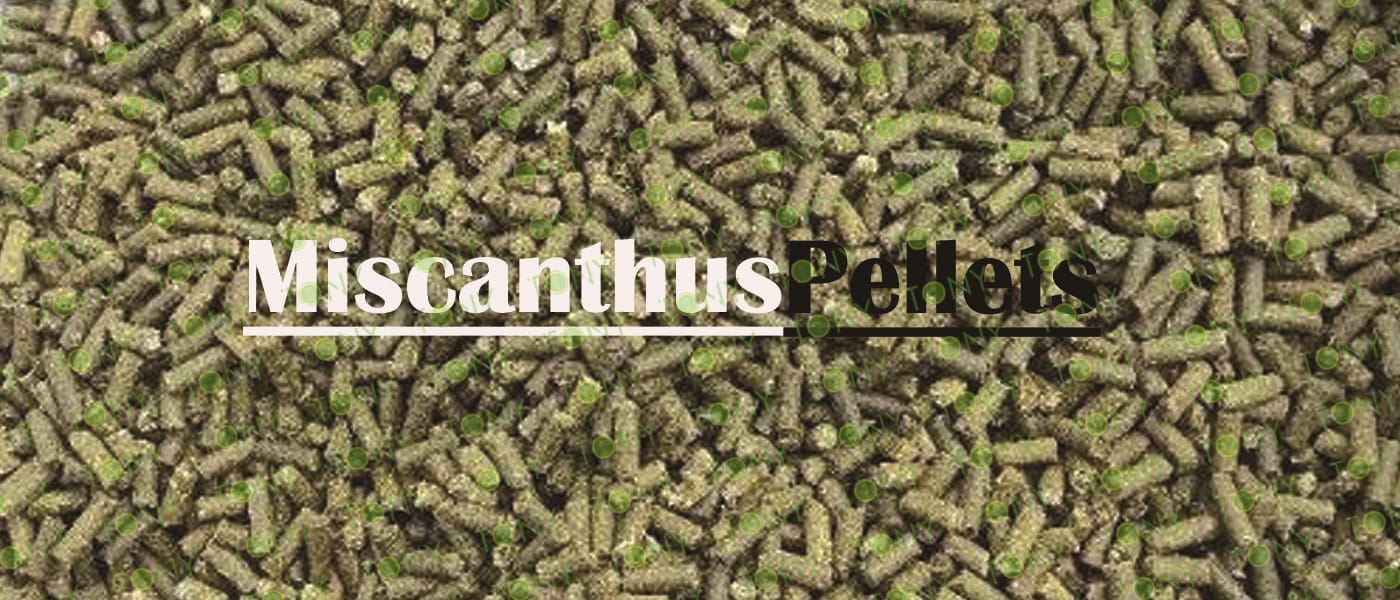

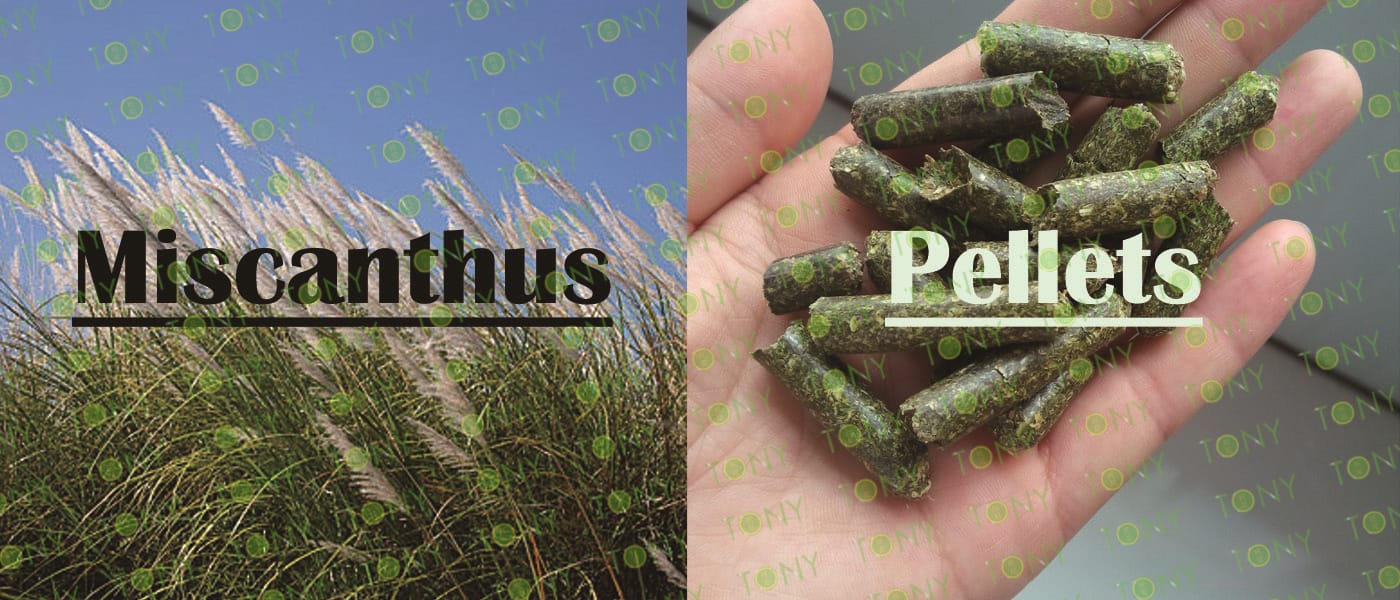
Miscanthus plants, from the genus Miscanthus, are often used to add movement and texture to gardens, but they can also be the raw material for pellet mills to produce biomass pellets, commonly known as "miscanthus pellet mills."
A new study shows that these grasses can be grown in lower agricultural grade conditions, such as marginal lands, due to their excellent stress tolerance and ability to photosynthesize at low temperatures.
Miscanthus is a promising biofuel because of its high biomass yield and low input requirements, which means it can adapt to a variety of climate zones and land types.
It is considered one of the viable commercial options for farmers, but yields may be threatened by insufficient water supply or high temperatures, such as increased winter flooding or summer heat waves.
According to the study: Miscanthus can be used as a commercial crop because of its high biomass productivity, resilience and ability to continue photosynthesis in winter. Previously, a decade-long trial in Europe showed that Miscanthus plants (Miscanthus) can produce up to 40 tons of dry matter per year on 1 hectare of land. This target was achieved after only two years of planting, proving that its biofuel ethanol production capacity per hectare is higher than that of switchgrass and corn.
The Miscanthus grass pellet machine makes Miscanthus grass truly zero emission.
The Miscanthus grass pellet machine uses its physical extrusion characteristics to process Miscanthus grass. The extrusion process is green and environmentally friendly. The extruded Miscanthus grass biomass pellets can be used as fuel and feed, and are also green and environmentally friendly products. As feed pellets, animals love to eat, have a good taste, and are easy to digest and absorb. As fuel pellets, they burn without pollution, truly achieving zero emission.

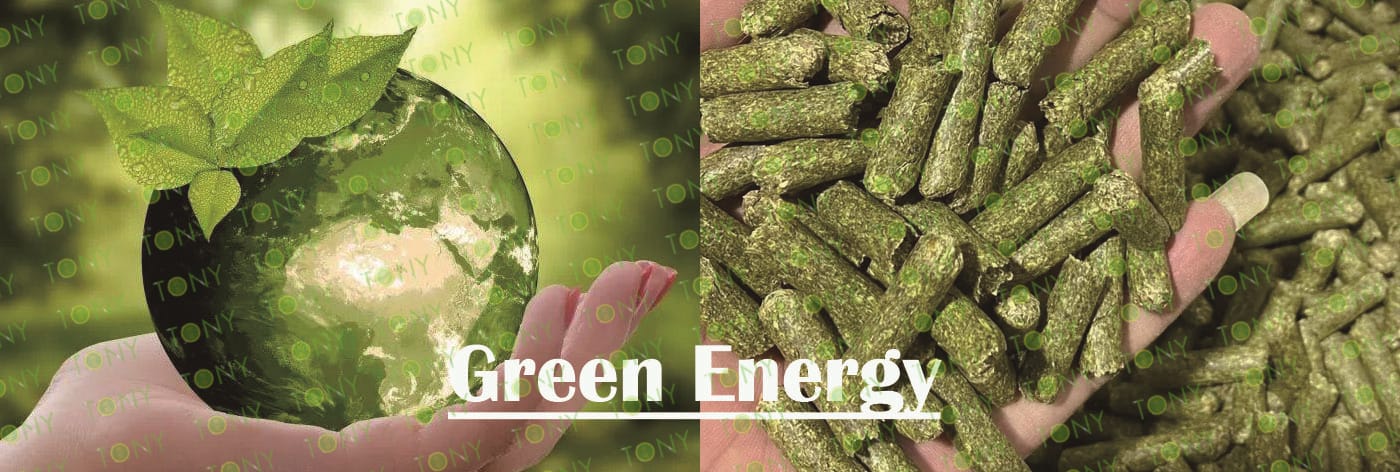
The market outlook for Miscanthus granules is generally positive, but attention needs to be paid to the process of industry standardization and standardization. As an emerging product, the market prospects of Miscanthus granules are affected by multiple factors, including industry policies, technological progress, and market acceptance. With the continuous advancement of technology and policy support, the market for Miscanthus granules is expected to expand further.
The growth of the Miscanthus granule market will be affected by multiple factors. First, technological progress is a key factor in promoting market development. The introduction of new technologies, such as volatile oil inclusion technology and high-speed centrifugation technology, has improved the quality and effect of Miscanthus granules and met consumers' demand for high-quality products. Secondly, the policy environment also has an important impact on the Miscanthus granule market. The country's support policies for traditional Chinese medicine, such as incorporating Chinese medicine formula granules into the scope of medical insurance reimbursement, will further promote the expansion of the market. Finally, consumers' demand for health and convenience is also an important factor in promoting the development of the Miscanthus granule market. With the improvement of living standards, consumers' demand for health products has increased. As a convenient and efficient health product, Miscanthus granules are expected to gain wider market recognition.
In terms of the competitive landscape of the Miscanthus granule market, several main features are expected to emerge. First, the process of industry normalization and standardization will be accelerated, which will help improve the competitiveness of the entire industry. Each province may support 1-2 leading enterprises, which, with the support of the government, are expected to rapidly expand their market share nationwide. Secondly, Miscanthus granule products will gradually enter more medical terminals, especially Grade II and above hospitals, which will further promote the clinical application and recognition of the products. Finally, as the market expands, more companies are expected to enter the field of Miscanthus granules, and competition will become increasingly fierce. Companies need to continue to innovate and improve product quality to gain an advantage in the market.

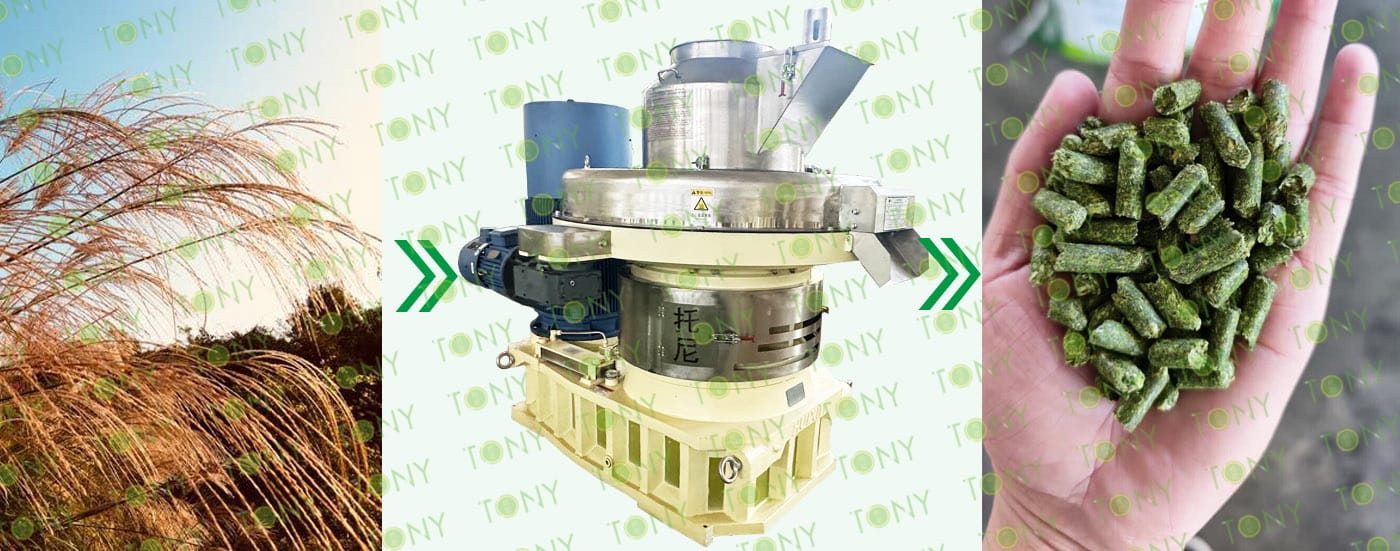
The working principle of producing pellets from Miscanthus mainly involves physical extrusion and molding processes, which are usually achieved through a pellet machine (such as a Miscanthus pellet machine). The following is a detailed working principle:
Raw Material Preparation:
First, the Miscanthus needs to be collected and processed as raw material. As a perennial reed-like herb, Miscanthus has the characteristics of high biological yield and low input requirements, and is suitable as a raw material for biomass pellets. The raw material Miscanthus needs to undergo appropriate pre-treatment steps such as cutting and drying to ensure that it is suitable for subsequent processing.
Physical extrusion: The processed Miscanthus raw material is fed into the hopper of the pellet machine. The pellet machine uses the principle of physical extrusion to extrude the raw material through internal mechanical structures (such as rotating rollers and fixed molds). During the extrusion process, components such as lignocellulose in the raw material are compressed and tightly combined to form a granular product with a certain density and strength.
Molding And Cutting:
The extruded Miscanthus raw material is gradually formed into granules in the mold. As the extrusion process continues, the formed particles are pushed out of the mold and cut by a cutting device to obtain Miscanthus biomass pellets with uniform length and regular shape.
Drying And Cooling:
The newly produced Miscanthus biomass pellets may contain a certain amount of moisture and need to be dried by drying equipment to reduce its moisture content and improve its stability in storage and use. At the same time, the drying process also helps to further solidify the structure of the pellets and enhance their physical properties.
Collection And Packaging:
The dried Miscanthus biomass pellets are collected and packaged. The packaged Miscanthus biomass pellets can be easily stored, transported and used.
In general, the working principle of producing pellets from Miscanthus is to convert the Miscanthus raw materials into granular products through physical extrusion and molding processes. This process not only realizes the resource utilization of Miscanthus, but also improves its utilization efficiency and value as a biomass energy source. At the same time, as a green and environmentally friendly energy product, Miscanthus biomass pellets have broad application prospects and market potential.

TONY Brand 4.5-5Ton/Hour Miscanthus Pellet plant can process Miscanthus Pellet,stlak,It is widely used in poultry feed, cattle, sheep and horse feed. It can also replace coal for burning.
1.Project Name: Miscanthus Pellet Line
2.Raw Materisl: Miscanthus
3.Moisture Of Raw Material: Wet Type 40%-55%
4.Capacity: 4.5-5Ton/Hour
5.Process: 1.Grinding Process→2.Storage Process→3.Fine Crushing Process→4.Drying Process→5.Pelleting Process→6.Cooling Process→7.Packing Process
6.Main Machine: Rotary Cutter,Silo,Hammer Mill, Drum Dryer,TONY Pellet MachineTYJ860-III-280KW,Pellets Cooler,Packing Machine And Belt Conveyors.
7.Total Power: About 480KW
8.Need Area: About 500-700m㎡
9.Project Country: North Korea
10.Voltage: 220V,50HZ
11.Application: All kinds of grass.
12.Finisheh Pellets Markets: Feed, fertilizer and fuel fields


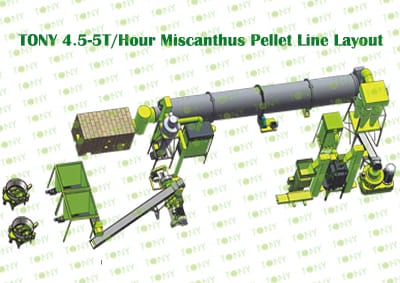 |
Project Layout For Customer |
|
1.Product:Miscanthus Pellets Line 2.Capacity:4.5-5T/Hour 3.TONY Brand 4.5-5Ton/Hour Miscanthus Pellet Line Project Process 4:Main Machine:Rotary Cutter,Silo,Hammer Mill, Drum Dryer,TONY Pellet MachineTYJ860-III-280KW,Pellets Cooler,Packing Machine,And Belt Conveyors. 5.Total Power: About 950KW 6.Need Area: About 500-700m㎡ 7.Country: North Korea |

|
How to use TONY pellet line to proceed from Miscanthus into pellets? It mainly contains the following steps and machines as following: 1.To Use TONY Rotary Cutter To Grind Miscanthus Pellet Into 30-40mm Chips. 2.To Use TONY Silo To Store The Chips. 3.To Use TONY Hammer Mill To Crush 30-40mm Chips Into 8-14mm Sawdust. 4.To Use TONY Drum Dryer To Dry The 45-55% Sawdust Into 10-15% Sawdust. 5.To Use TONY Vertical Ring Die Pellet Machine To Products Pellets With φ4.5-5mm. 6.To Use TONY Galvanized Cooler To Cool Pellets From 80-90℃ to 20-30℃. 7.To Use TONY Semi-Auto Packing Machine To Packing Pellets To 15-50KG/Bags. You can contact TONY to get for more details information and quotation. |
|
|||||||||||||||||||||||||||||||||||||||||||||||||||||||
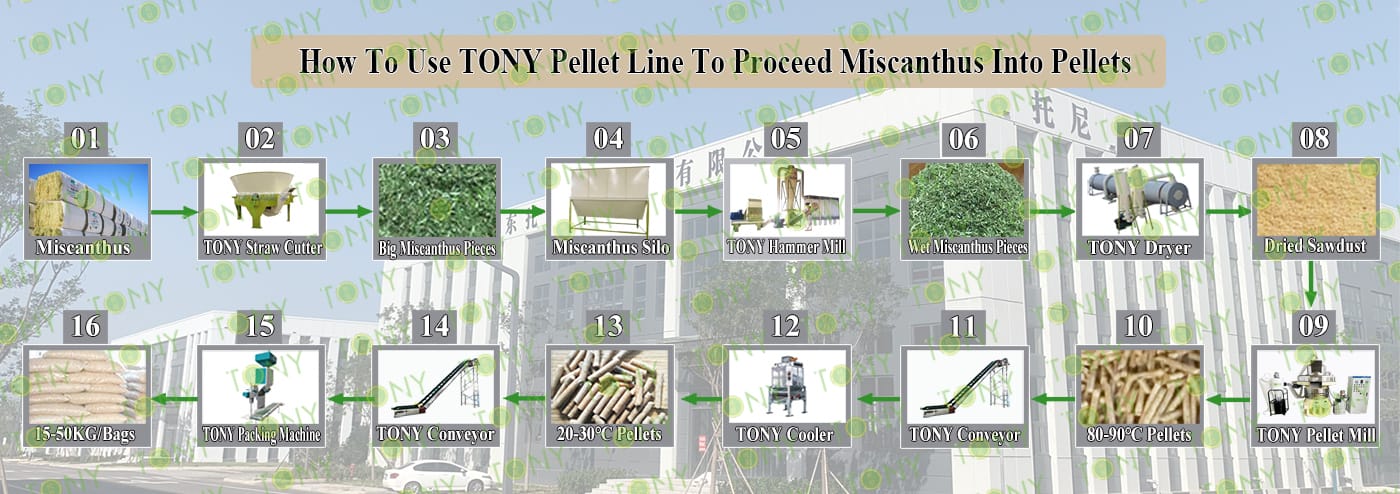



Following TONY Will Introduce For You For All The Necessary Machinery That Will Be Used For The Whole Pellet Production Line. Some machines can be custom made by customer according to different customer's detailed demand.Contact TONY for more details with quotation and layout.
 |
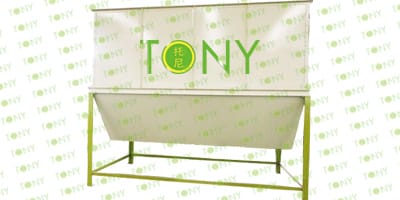 |
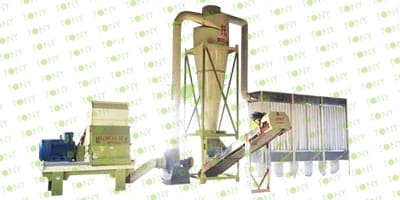 |
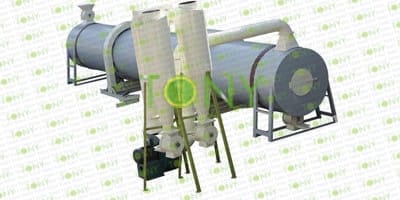 |
|
Rotary Cutter |
Storage Silo |
High Efficient Hammer Mill |
Drum Dryer |
|
1.To Grind Miscanthus Width <1.3m Into 30-40mm Miscanthus pieces. 2.Model: TPX-2000*2Sets 3.Capacity:4.5-5Ton/Hour. |
1.To Storage Miscanthus pieces. 2.Model: TCL-4.5*2Sets 3.Capacity:2-2.5Ton/Hour. Total Capacity4.5-5Ton/Hour. |
1.Crush 30-40mm pieces Into 8-14mm Sawdust. 2.Model: TFD-75-160-160KW*1Set 3.Capacity:5-6Ton/Hour/Set |
1. To Dry The 45-55% Miscanthus Sawdust Into 10-15% 2.Model: THGD2*20 *1set 3.Capacity:4.5-5Ton/Hour/Set. |
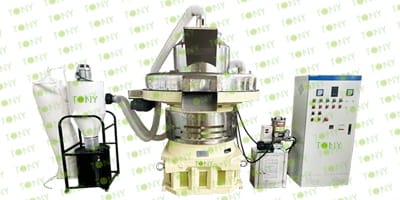 |
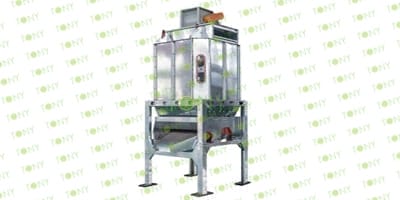 |
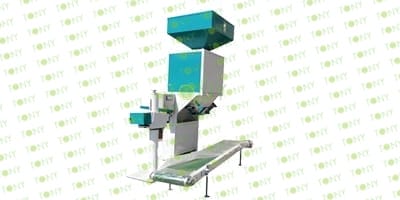 |
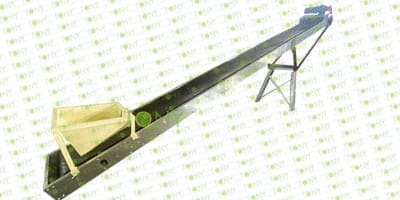 |
| Vertical Ring Die Sawdust Pellet Machine | Cooler Separator | Semi- Auto Dual Packing Machine | Belt Conveyor |
|
1.Model: TYJ860-III-280KW*1 Set 2.Capacity:4-5Ton/Hour/Set*1 Set 3.Total Capacity:4-5Ton/Hour/Set |
1.To Cool Pellets From 80-90℃ to 20-30℃ 2.Model:TCN-2.5 3.Capacity:4-5Ton/Hour |
1.Packing Pellets To 15-50KG/Bags. 2.Model:TBF-50*1 Set 3.Capacity:4-5Ton/Hour |
1.Transport Miscanthus Chips,Sawdust,Pellets. 2.Width: 80cm *5 Sets 3.Capacity:Designed With The Whole Line |


|
1.Chipping Process: A.This process is mainly used to grind the Miscanthus into Miscanthus chips with size 25-35mm. The finish Miscanthus chips size can be adjustable by changing different sizes of screeners and adding flying knives inside the Miscanthus chipper. B.This customer use TONY Brand TPX2000 model . Main Parts: 1).TONY's new rotary cutter. 2). Feed and unload belt frequency control to prevent card material 3). Hydraulic system control for more thickness of raw materials 4). Electronic control system allows the equipment to be used normally 5).Contact TONY for more details with quotation. |
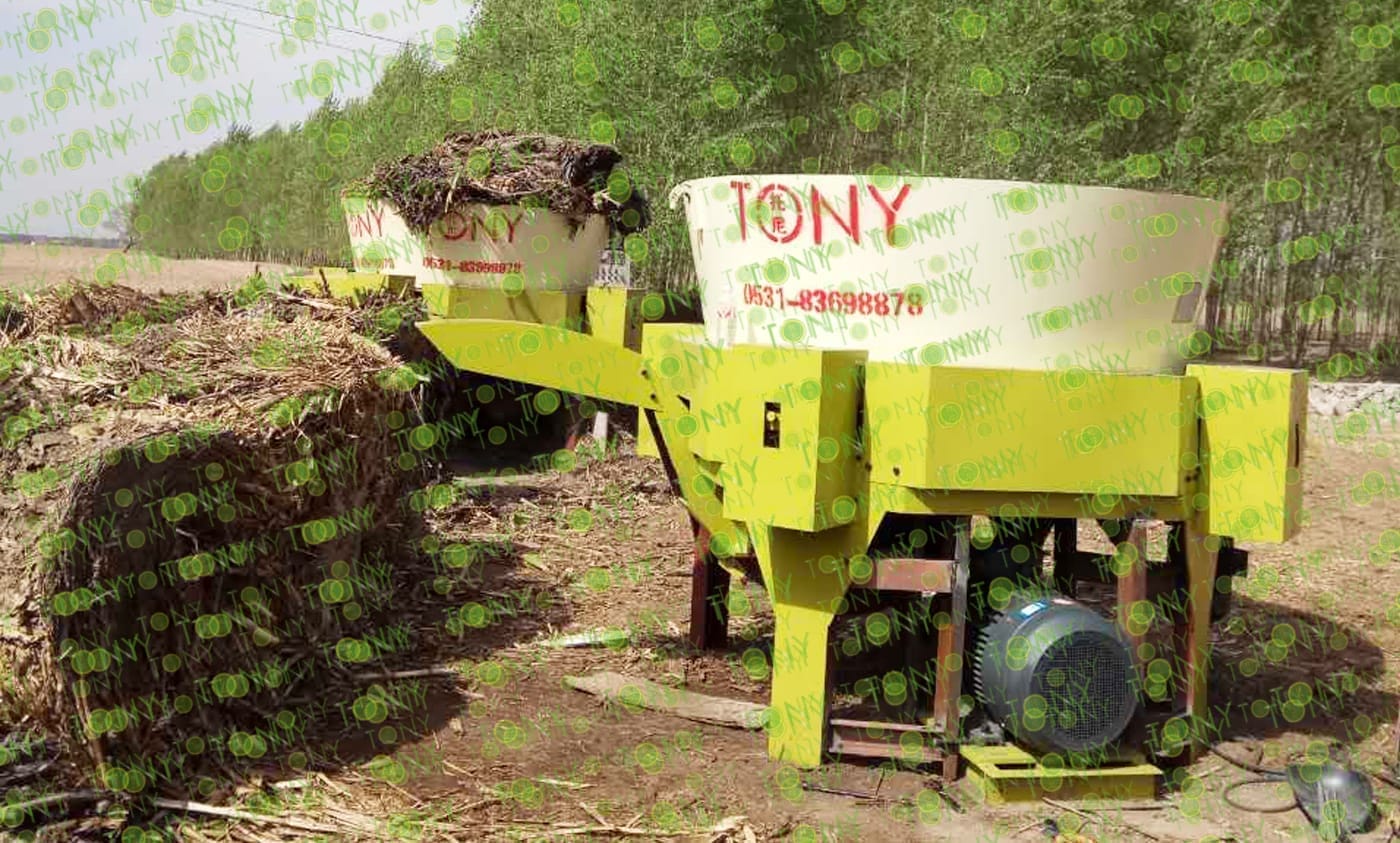

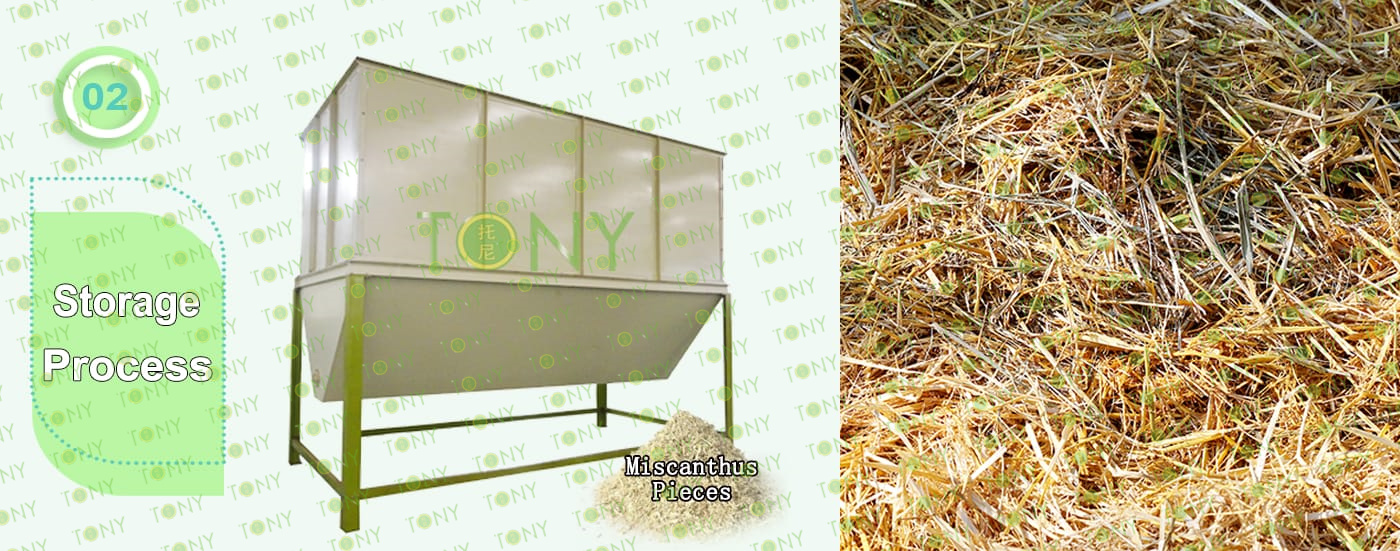
|
2. Storage Process: The customer chose the TONY brand miscanthus flake storage box to store the Miscanthus flakes from the rotary cutter. This process can be selected by the customer. If the customer does not choose the storage box, the Miscanthus flakes can be directly stored on the ground, which may require some labor. Main components: (1). TONY new Miscanthus flake storage box. (2). There are screws in the storage box to prevent the Miscanthus flakes from clogging. |
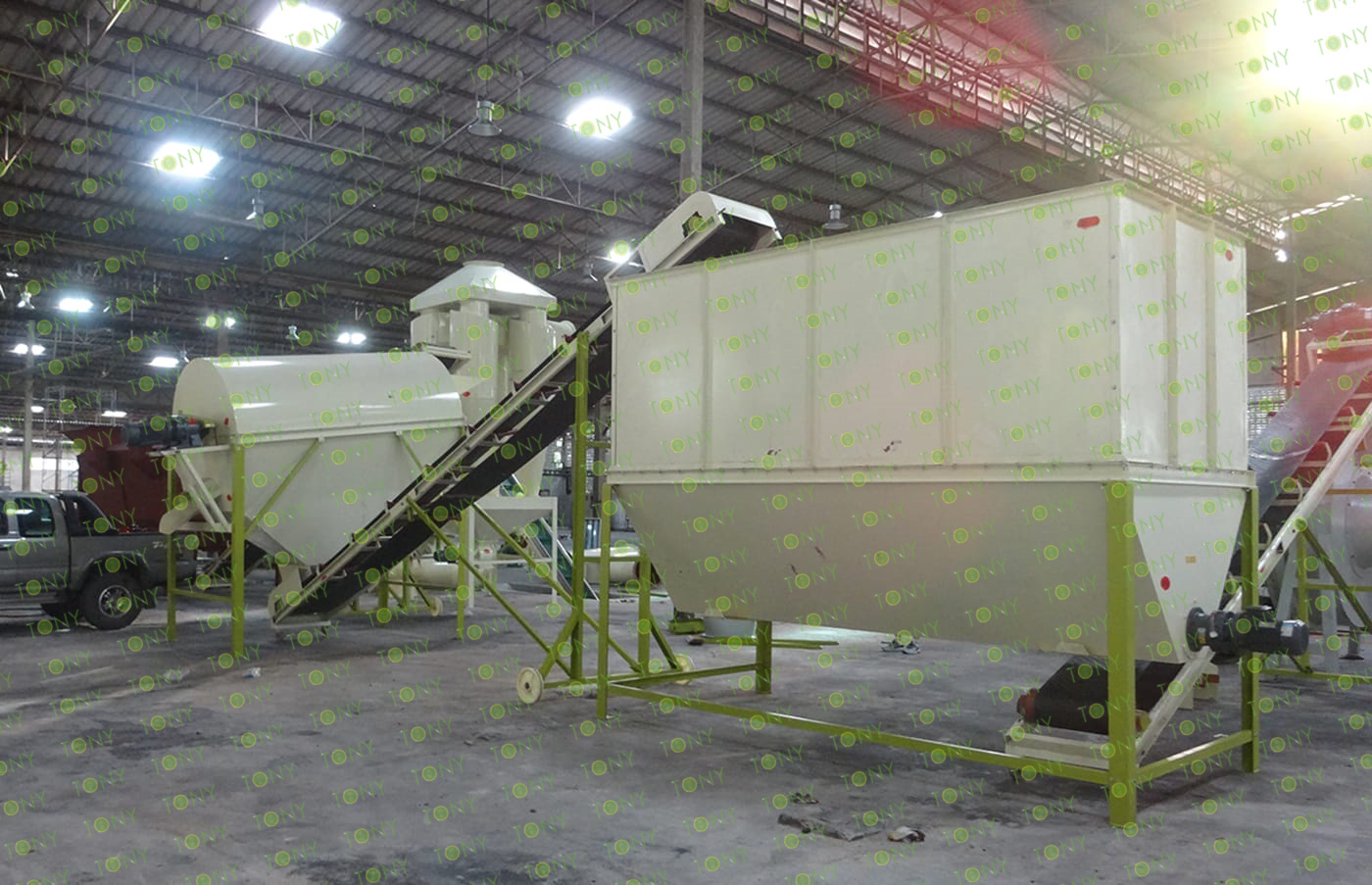


|
3.Miscanthus Chips Fine Crushing Process: A.This process is mainly used to crush 30-40mm miscanthus chips into 8-14mm sawdust. B.Capacity:5-6Ton/Hour. C.TONY use High Effective Hammer Mill TFD75-160-160KW-1set for this process. Main Parts: (1).TONY High Effective Hammer Mill. (2).90Holes Galvanized Dust Collector. (3).Sawdust Transportation Fan Blower. (4).Cyclone With Airlock. (5).Electrical Cabinets. |


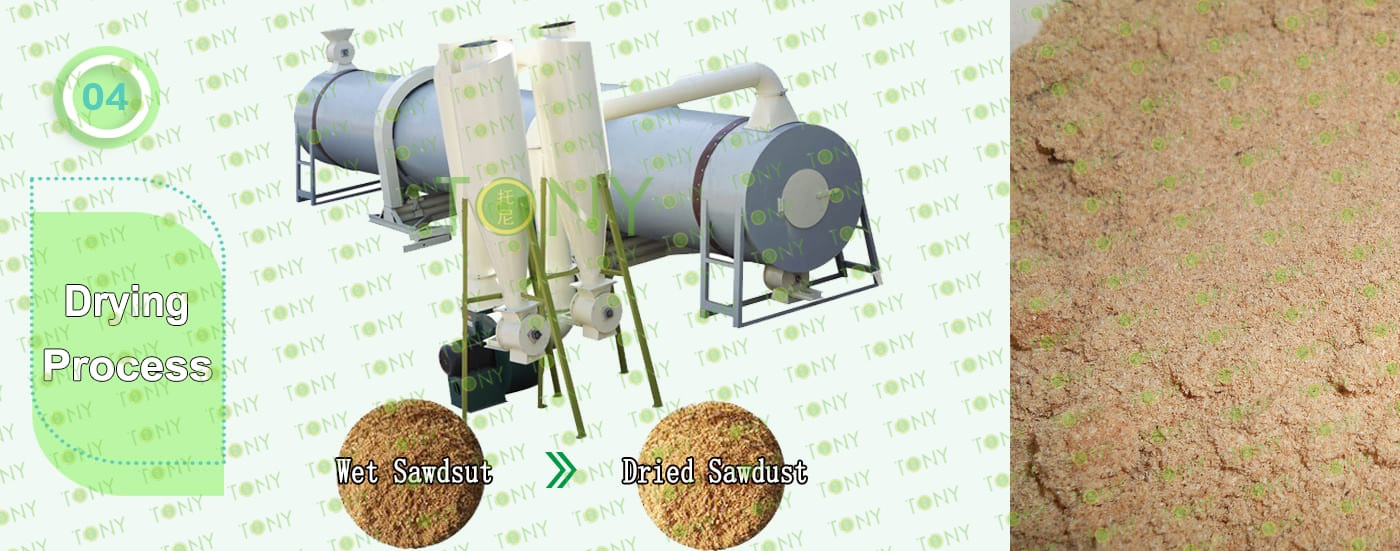
|
4.Sawdust Drying Process: A.This process is mainly used to dry the sawdust from 40-45% to 10-15%. B.Capacity:4-5Ton/Hour. C.TONY use 1set of 2*20m single layer rotary drum dryer for this process,this customer use biomass waste Miscanthus as buring raw material with hot stove 5*2*2m.TONY hot blast stove is made of firebrick pan, shell with H steel plate as the frame. There are 3 layers of fire blocking device inside, which can effectively prevent the fire from entering the tumble dryer. TONY dryer use spiral tube material, which has higher heart rate and is not easy to deform. Unlike other manufacturers with iron plate splicing welding, very easy to deformation. Main Parts: (1).TONY's Rotary Drum Dryer Main Body.(Reducers With Motors and Pips.) (2).TONY's Miscanthus Waste Hot Stove. (3).Fan Blower+Cyclone With Airlock. |
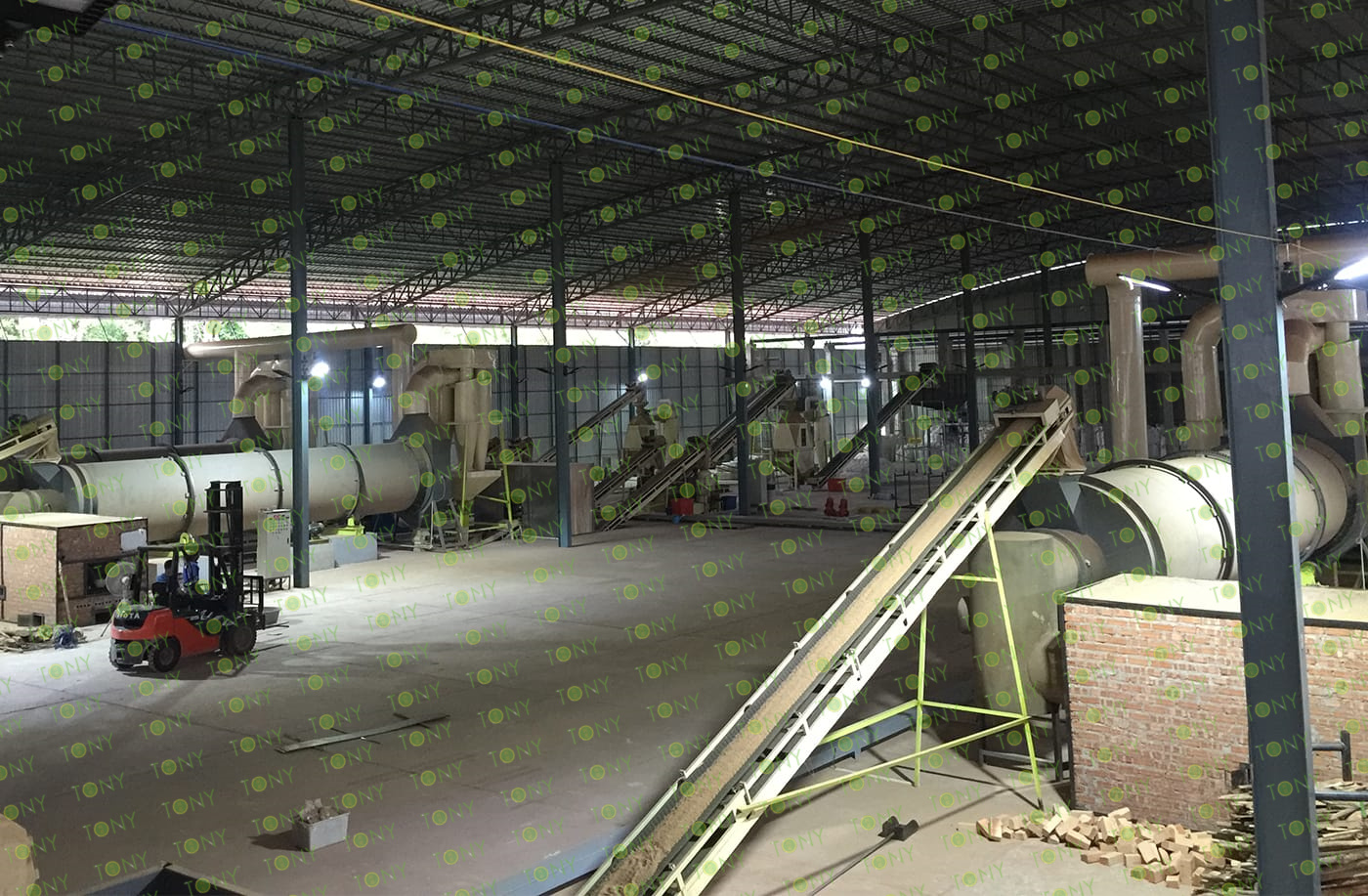

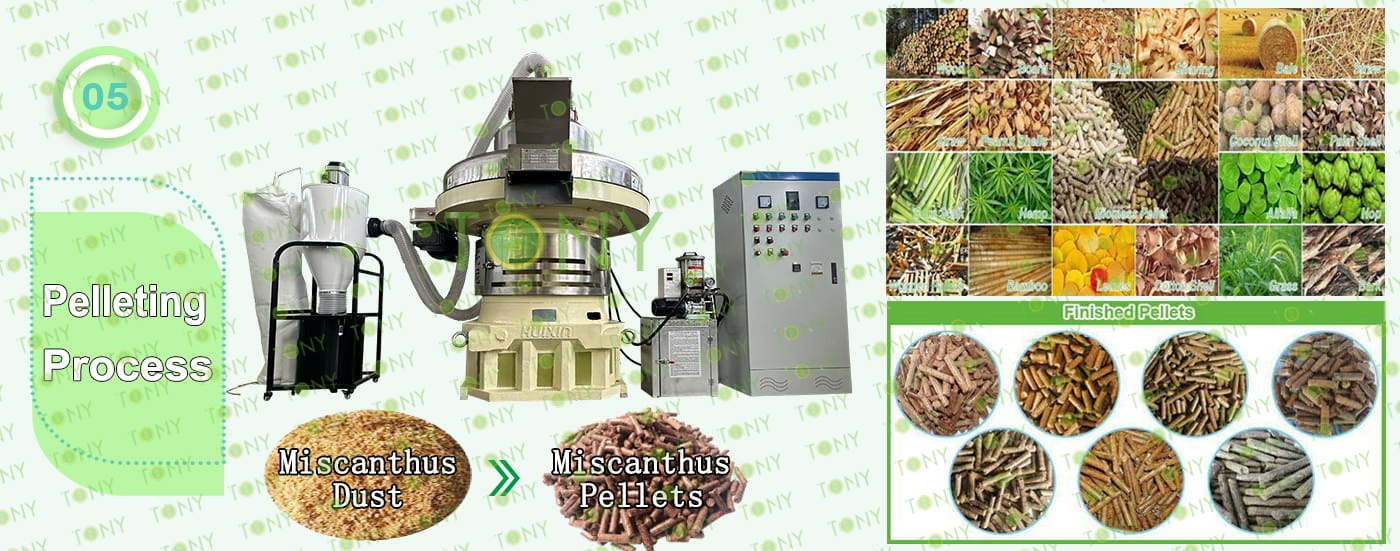
|
5.Pelleting Process: A.This process is mainly used to product pellets with φ4.5-5mm. B.Capacity:4.5-5Ton/Hour. C.The Customer Chose 1Set Of TONY Brand Vertical Ring Die Pellet Machine TYJ860-III-280KW With Capacity 4.5-5Ton/Hour. Main Parts: (1).TONY's new Vertical Ring Die Pellet Machine. (2).Cyclone And Bags Dust Collectors. (3).Bearings Automatic Lubrication System. (4).Electrical Cabinets. You can choose TONY new type SS304 pellet machine or old type MS pellet machine. |
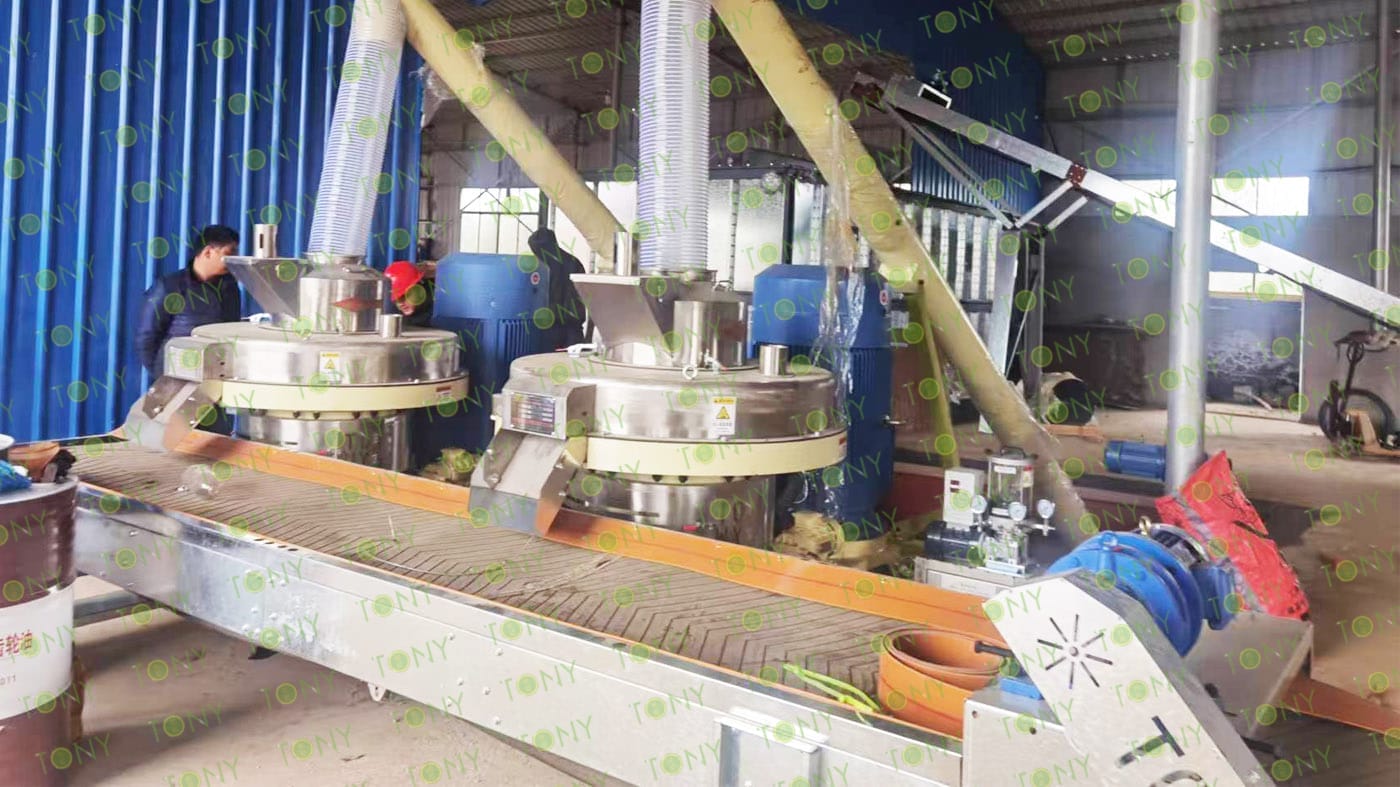

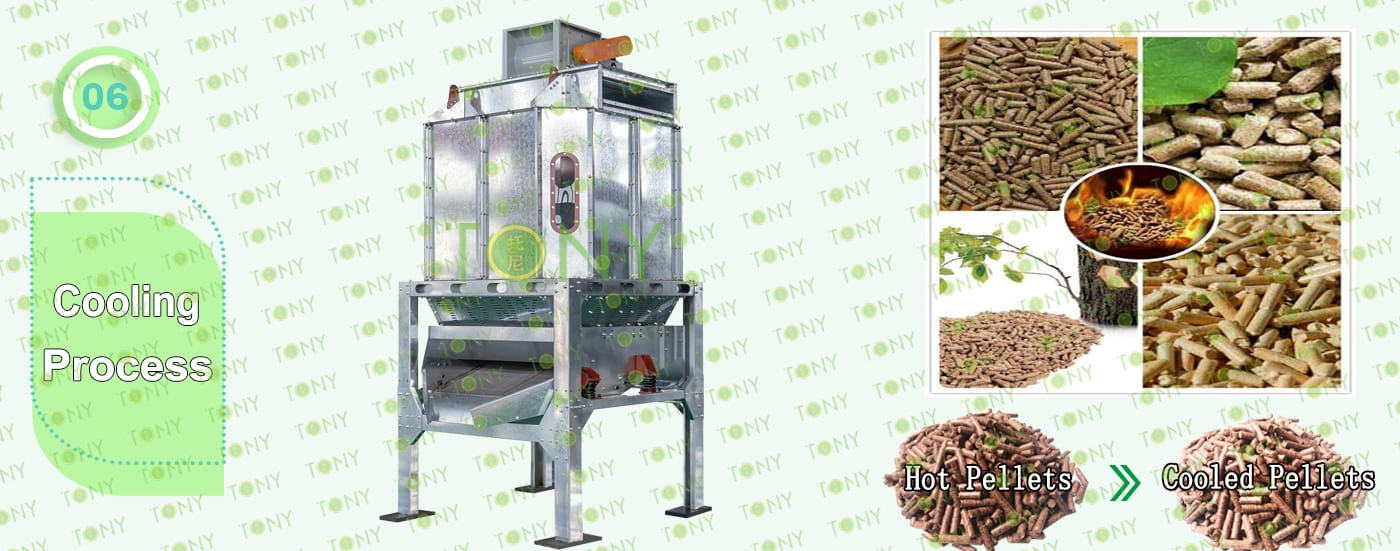
6.Cooling Process:
A.This process is mainly used to cool pellets from 80-90℃ to 20-30℃.
B.The Customer Chose 1Set Of TONY Galvanized Cooler Separator With Capacity 4.5-5Ton/Hour.
Main Parts:
(1). TONY's new Galvanized Cooler Separator With Vibrating Screen.
(2). Cyclone And Bags Dust Collectors.
(3). Fan Blower.
(4). Connect Pipes.
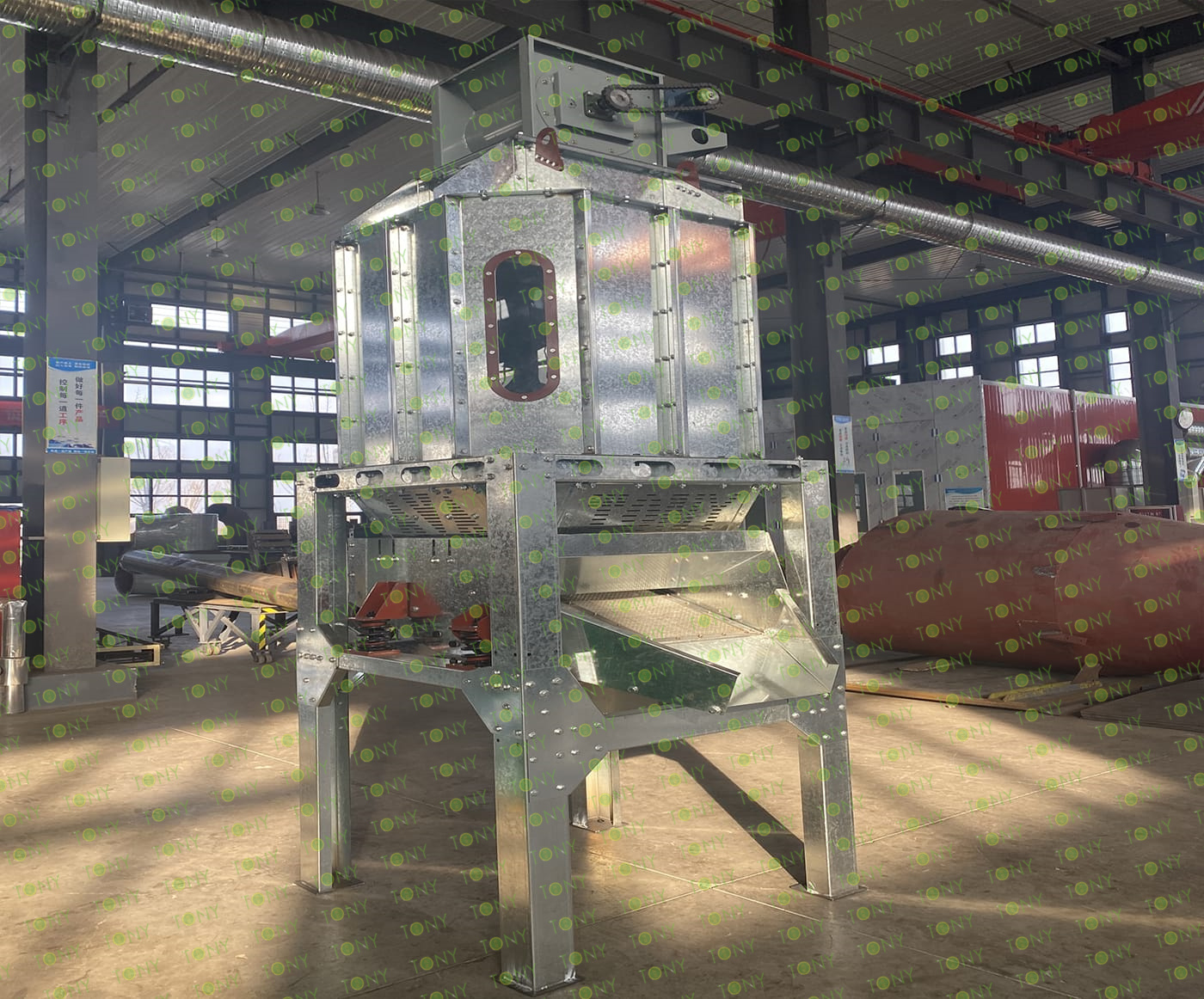

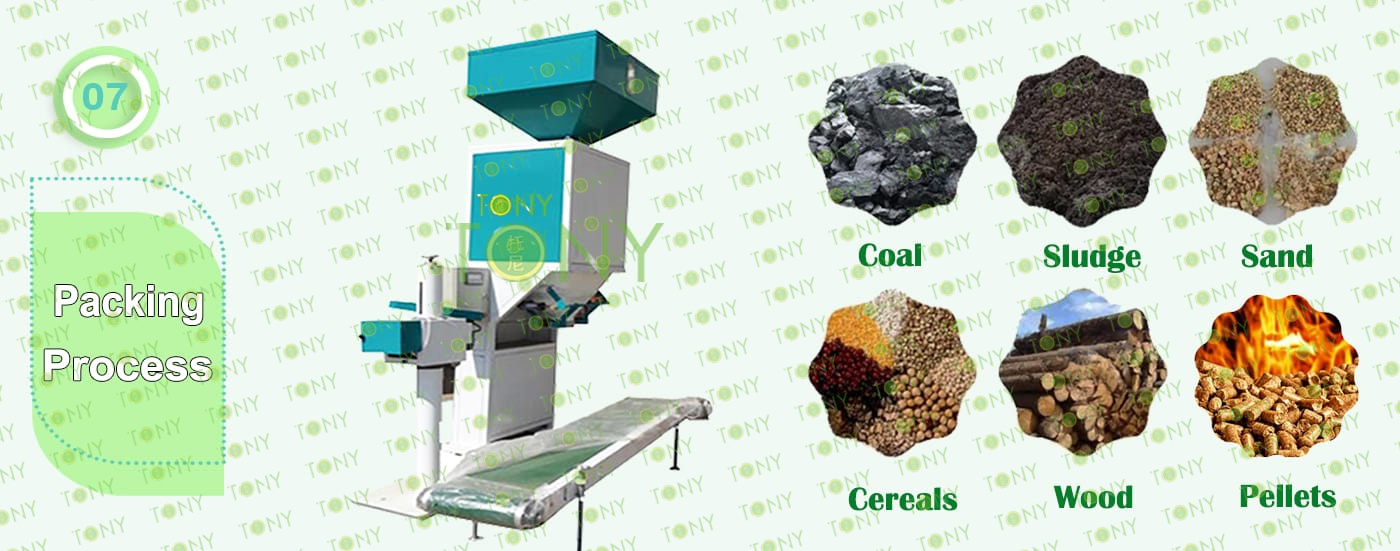
7.Packing Process:
A.This process is mainly used to pack pellets to 15-50KG/Bags.
B.The Customer Chose 1Sets Of TONY Semi-Automatic Packing Machine With 4-5Ton/Hour.
Main Parts:
(1). TONY's newTONY Semi-Automatic Packing Machine.
(2). Sew Machine,Buyer Can Also Chose Hot Seal Machine For Chosen,To Confirm With TONY For The Price Difference.
(3). Bags Transportation Conveyors.
(4). Feeding Inlet Silo With 1㎥.
(6). Electrical Cabinets.
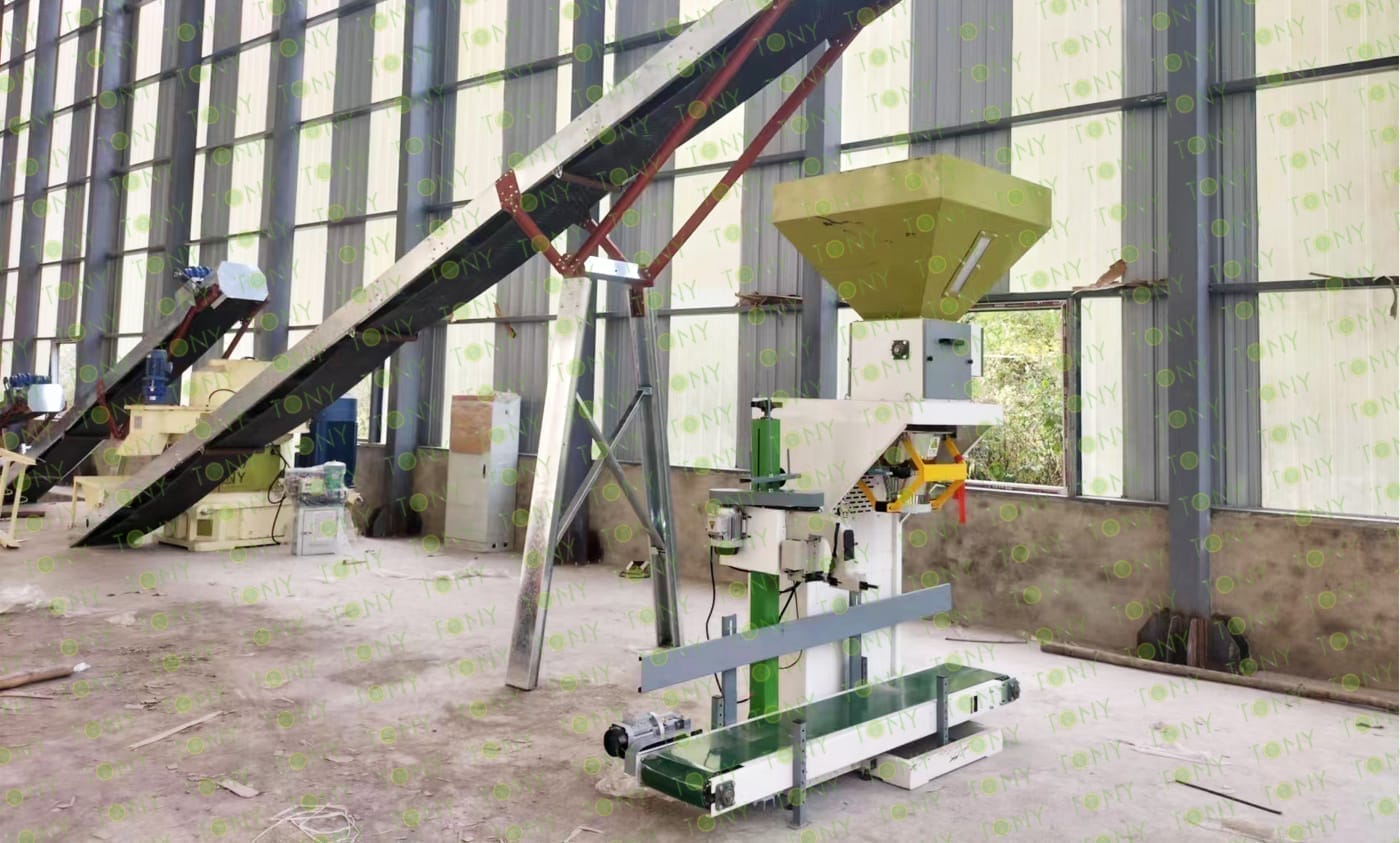

TONY Detailed Design 3D Layout With Detailed Size For 4.5-5Ton/Hour Miscanthus Pellet Line According To Cusomer Factor Size
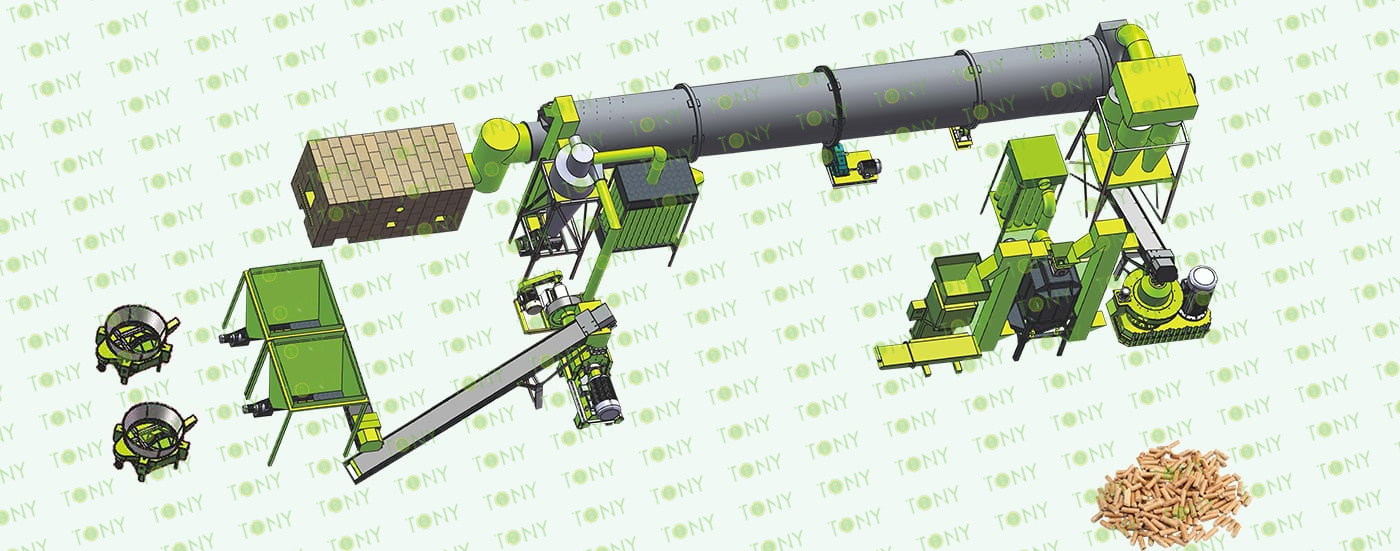

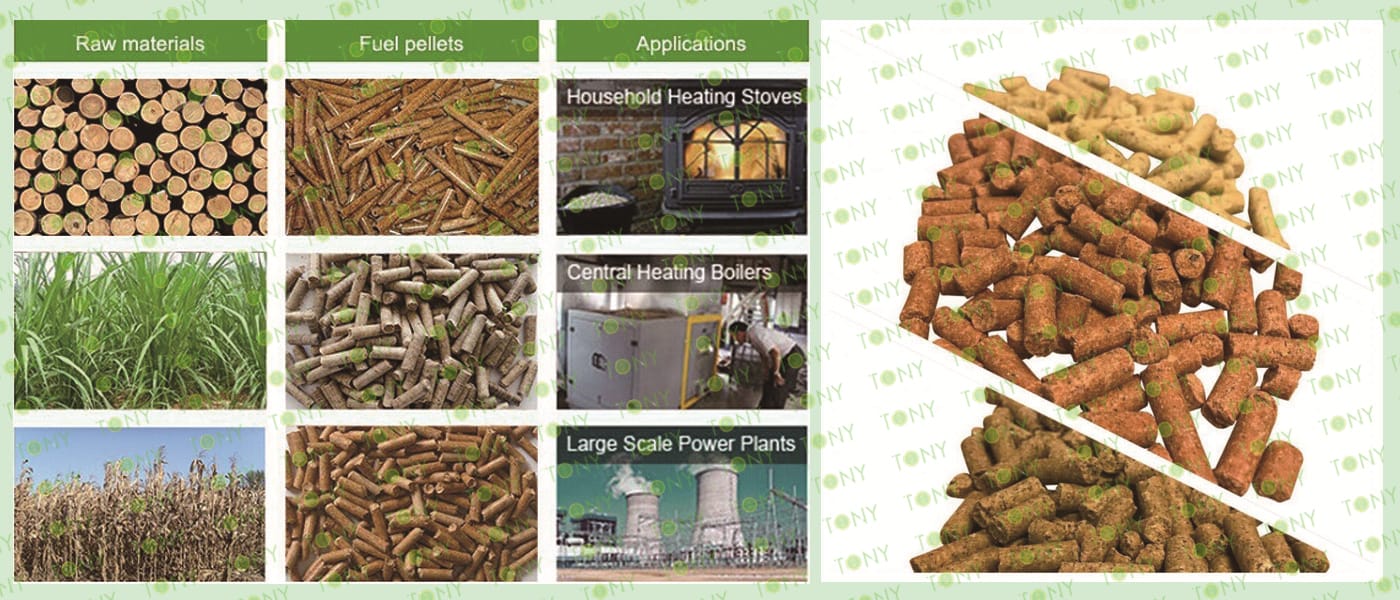
Miscanthus as pellets has the following advantages:
Significant Environmental Benefits
Zero Emission Of Carbon Dioxide: Miscanthus absorbs a large amount of carbon dioxide through photosynthesis during its growth. The carbon dioxide released when burned into pellets is basically equivalent to the amount of carbon dioxide absorbed during its growth. From the perspective of the entire life cycle, the net effect of carbon dioxide is zero, which helps It is more environmentally friendly in mitigating the greenhouse effect.
Reduce Air Pollution: Miscanthus particles do not release harmful gases such as sulfur dioxide and nitrogen oxides when burned. Compared with traditional fossil fuels, they can significantly reduce air pollution and reduce the occurrence of environmental problems such as acid rain.
Resource Rich And Renewable
Rapid Growth And High Yield: Miscanthus is a plant with fast growth and high biomass yield, such as Chinese miscanthus and other varieties. It has tall plants, thick stems and developed root systems. The yield can be as high as 23-30 tons/ha, and it can produce granules. Provide sufficient raw materials to meet the needs of large-scale production.
Perennial And Easy To Plant: As a perennial herbaceous plant, miscanthus can be harvested for many years at a time. It has strong adaptability to the environment, is cold and drought resistant, has little dependence on water and fertilizer, and can grow in a variety of soil conditions, including some relatively barren lands. It does not compete with grain for land, helps preserve water and soil, and has good ecological benefits.

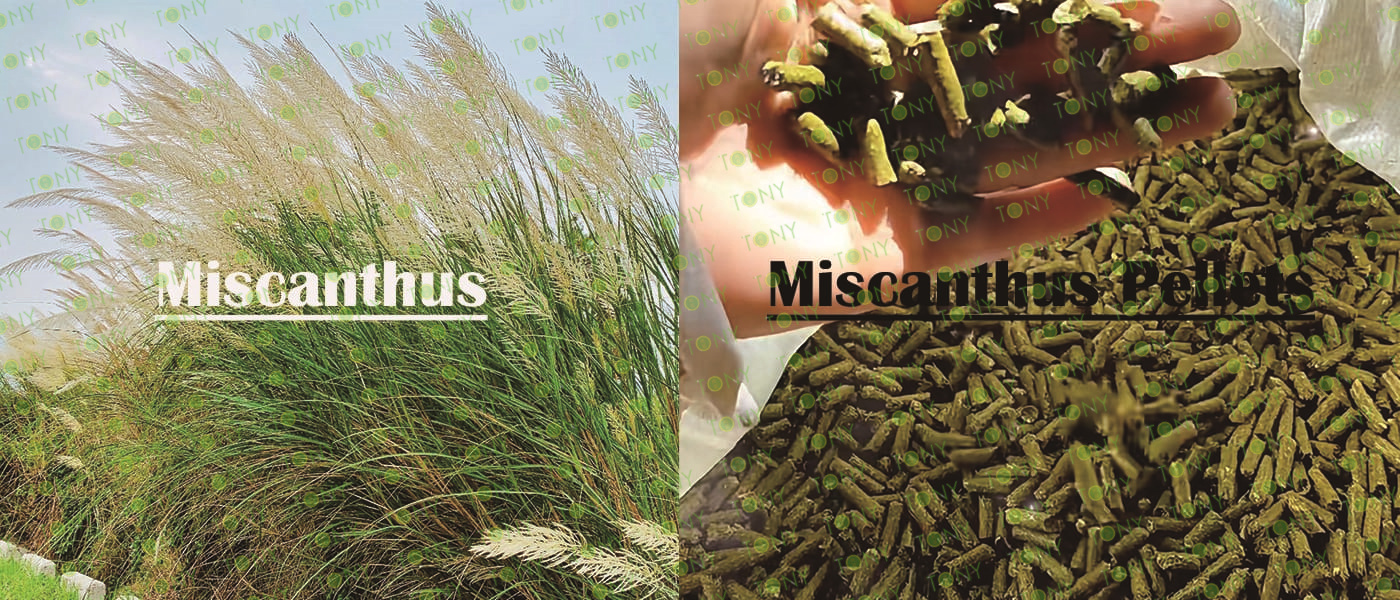
Under the current technical and economic conditions, the development of biomass pellet fuel, replacing and saving fossil energy, is conducive to improving the energy structure, reducing carbon dioxide emissions, alleviating and coping with global climate change, and has obvious advantages in energy saving, environmental protection and economy compared with burning raw coal. Biomass pellet fuel industry is the best meeting point and cutting point for low-carbon economic development and clean energy substitution. Biomass pellet fuel can make wood, grass, straw and other biomass and coal resources can be converted on the spot, not only to reduce the transportation pressure, but also to achieve high value utilization of agricultural resources. The energy saving and environmental protection benefits are considerable, the application field is wide, and the market prospect is very broad.
1. Resource Advantages Of Miscanthus Biomass Pellet Fuel
The main raw materials of miscanthus biomass pellet fuel are miscanthus, grass, dead grass, alfalfa and so on. Grass is a very abundant renewable biomass resource on the earth. Among them, in addition to being used as fertilizer, feed, fuel, planting edible fungi base material, paper and other industrial raw materials, a large number of waste, incineration and other behaviors cause waste of resources, which is not conducive to the conservation and recycling of agricultural resources. In the process of miscanthus regeneration and utilization, the C02 emitted reaches carbon balance with the C02 absorbed by the grass regeneration, which has the role of zero C02 emission, and has potential contribution value to the mitigation and final solution of the greenhouse effect
2. Industrial Prospect Of Biomass Pellet Fuel
World economic development is still heavily dependent on coal consumption. However, the non-clean mining and utilization of a large number of coal has brought serious environmental pollution, which has become a major problem that restricts the sustainable development of our country. 70% of NOx emissions are caused by coal combustion, and more than 70% to 80% of mercury is mainly from the flue gas emitted by direct coal combustion. The development of biomass pellet fuel technology can control C02 and S02 emissions. Compared with raw coal combustion, biomass pellet fuel can improve combustion efficiency and reduce pollution, and has entered the commercial production stage.

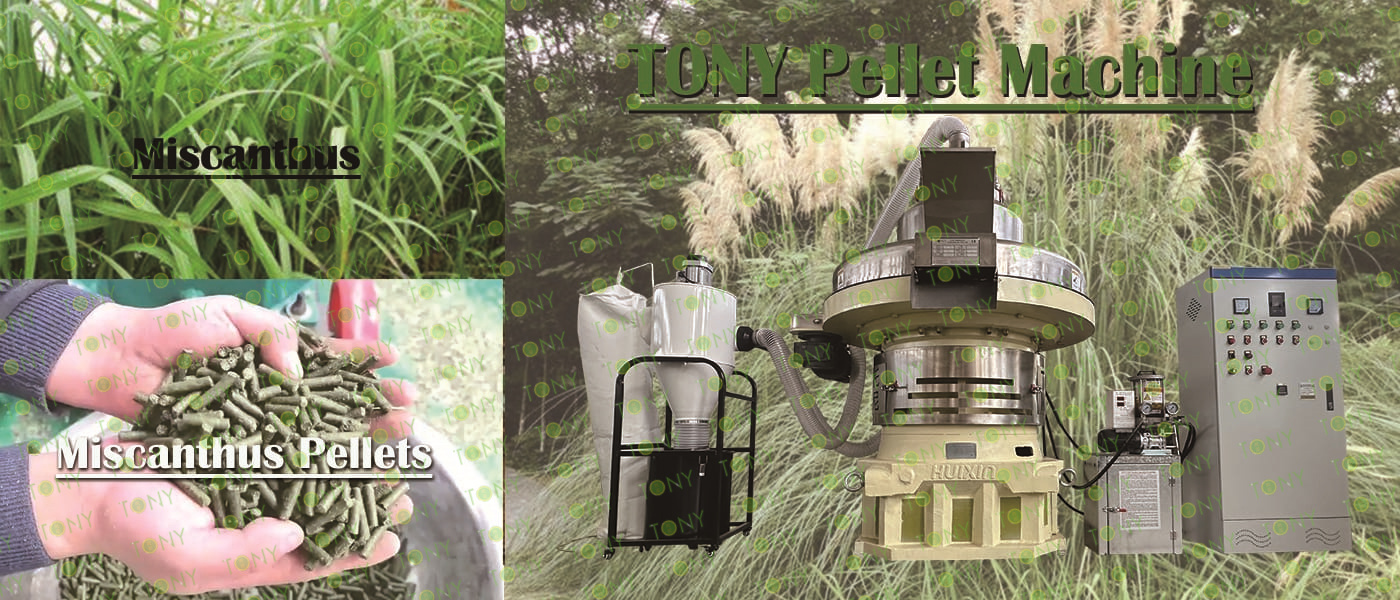
1. Harm And Utilization Of Miscanthus
In rural areas, miscanthus are a common problem. The long-term existence of a large number of miscanthus not only affects the soil of farmland, but also threatens the growth of crops, seriously affecting the development of agriculture. Therefore, how to deal with the weed problem has become an urgent problem to be solved.
At the same time, miscanthus are also a potential resource. Using scientific and reasonable methods to utilize miscanthus can create many new values. For example, some experts believe that deep processing of miscanthus into pellets can be used as animal feed or feed mainly based on feed, which brings convenience to the breeding industry. At the same time, these weed pellets can also be used to produce energy, such as fuel, diesel, etc., which is a very promising direction.
2. Deep Processing Of Rural Weed Pellets
In order to convert miscanthus into usable resources, deep processing is required. The deep processing process of miscanthus mainly includes the following steps:
1. Shearing: Cut the miscanthus into small segments for subsequent processing.
2. Grinding: Grind the weed segments into granules.
3. Compression: Screen the particles and compress them through a press to reach a certain density
Through such deep processing, miscanthus can be converted into useful pellets.
III.Application Of Rural Weed Particles
The deep processing of rural weed particles can be applied to many fields, especially in agriculture.
1. Animal feed: Using rural weed particles as animal feed can not only reduce feed costs, but also increase the growth rate and meat quality of animals.
2. Fuel: Rural weed particles can also be used as fuel, and can generate electricity or provide heating through combustion.
3. Fertilizer: Weed particles are rich in various nutrients and can be used as raw materials for the production of organic fertilizers.
IV.Conclusion
With people's attention to natural resources and the enhancement of awareness of environmental protection, using rural miscanthus to create new industries is not only an environmentally friendly way, but also a sustainable development direction. We can transform miscanthus into useful particles by strengthening the deep processing of rural miscanthus, and apply them in animal feed, energy production and other fields. In this way, it can not only solve environmental problems such as rural miscanthus, but also create new industries and promote local economic development.

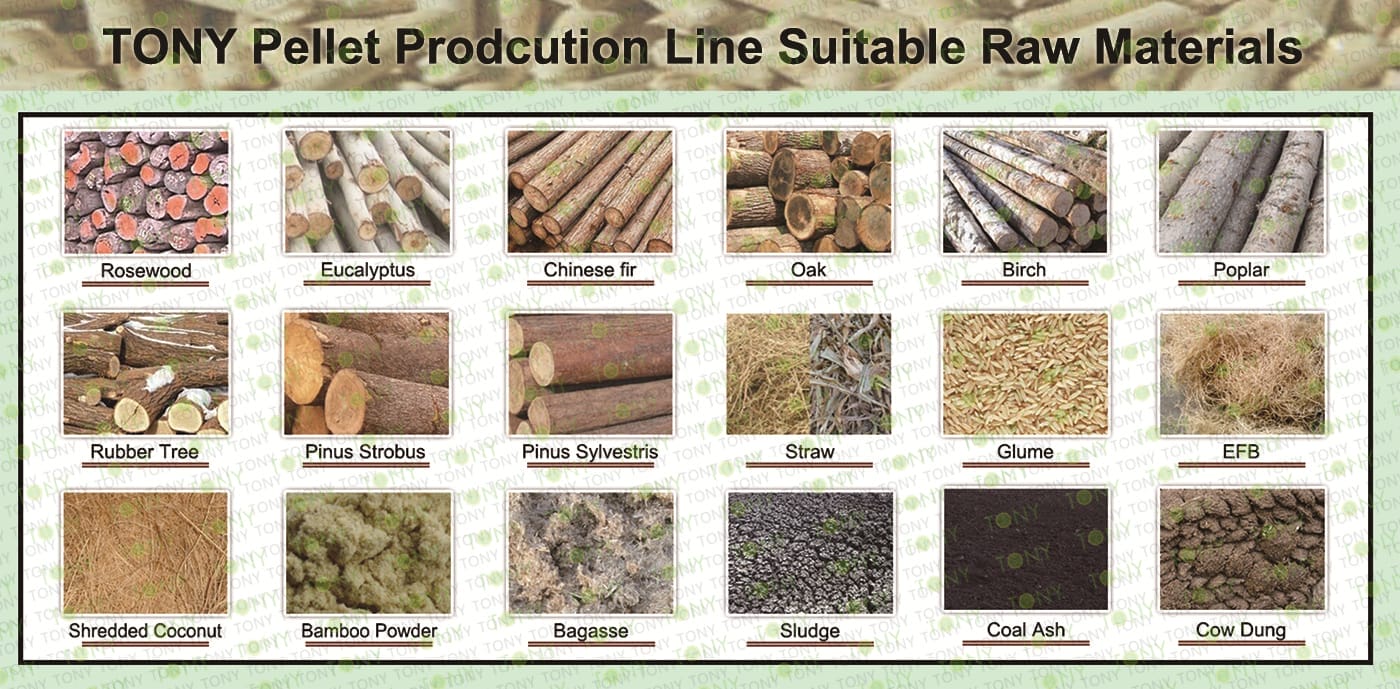




Shandong TONY Environmental Protection SCI-TECH CO., LTD. (formerly Zhangqiu TONY Machinery Co., LTD.) is an integrated enterprise specializing in developing, anufac-turing and international trade of pellet equipments for over 20 years.
Main products are biomass ring die and flat die pellet machine,biomass pellet line, feed pellet machine, drying, crushing equipments,cooling and ton packing machine.
Looking to the future, we sincerely hope to establish a long-term reliable cooperation relationship with clients all over the world!
TONY is a professional manufacture for biomass pellet machine,pellet production line over twenty years.Main products are biomass ring die and flat die pellet machine,biomass pellet line, feed pellet machine, drying, crushing equipments,cooling and ton packing machine.
The new pellet machine adopts stainless steel material ,with high capacity and lower consumption ,which is highly pressed by domestic and abroad all over the world.
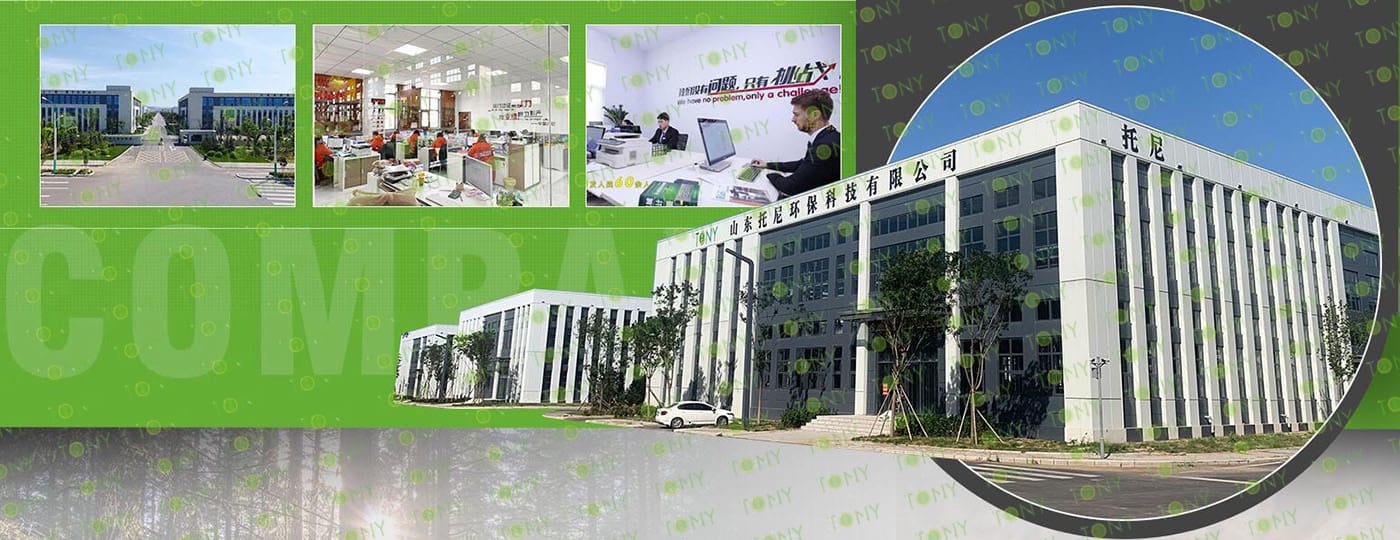
2025 Tony Machinery - All Rights Reserved. Map